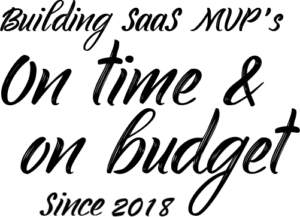There has never been a time when the demand for software developers or application engineers was as high as it is today. You would think that pretty much every other software and tool has already been built but no, new challenges crop up every other day, and those who find the best software solutions usually gain that coveted competitive advantage.
What Is the Definition of Software Development?
Software development in a business context is an all-encompassing term used to refer to all the activities involved in the creation and routine improvement of computer solutions (software) for real-world business problems. For instance, a medical facility can choose to develop software to streamline communication between different departments for better inpatient and outpatient care.
How Does Software Development Add Value to Your Business?
There are many direct and indirect benefits of having a software development arm in your business either developing a cutting-edge solution for you or external users. Here are some of them:
Gain Competitive advantage using cutting edge solutions
Since the introduction of business software in the 90s, companies have always used them as a deafferenting factor to gain competitive advantage. The company with the best most refined software system usually edges its competitors because software is primarily designed to support efficiency and process optimization.
For example, a company that uses an efficient software solution to manage schedules in its operations can gain an advantage over its closest competitors who are using manual systems or outdated scheduling systems. Sometimes all you need is a tiny gain in terms of performance in operations to increase efficiency and move ahead of your closest competitor.
The emergence of data-driven software designed to use machine learning has made the software even more important for businesses. Only businesses that have access to cutting-edge software, preferably from an in-house team or custom software development company, can take advantage of these new opportunities to gain a sustainable competitive advantage.
Higher ROIs for Your Business
You stand to gain a lot as a business by investing in a software development team to develop solutions either for your business or for third parties. The return on investment for custom software that solves a specific problem well is usually quite attractive even for small businesses. The ROI is either realized internally when you use the software to optimize your processes or when you sell the software to third parties.
Your business will also enjoy the benefits of not having to do recurring payments to an external vendor should you choose to hire an internal bespoke software development team. The same can also be achieved if you choose to work closely with an external custom developer who will develop your software and license it to you instead of charging you regularly.
Lower Costs Using Automated Solutions
There has been a lot of progress in computing technology in the past few years with faster, more efficient chips and computer hardware coming to market. However, not all businesses are taking full advantage of these new resources to automate their process and lower costs. You can save a lot of money as a business by simply investing in software that solves specific problems in your business.
As an example, a food processing company currently uses a manual register to track the number of workers who report to work and the number of hours they work. However, workers have discovered a loophole in the manual system and usually collude with supervisors who change their working hours o compensate for sick days and days missed to receive full pay.
In the above example, the fruit processing company can reduce its labor costs significantly by developing an automated register that uses blockchain technology to record hours worked and calculate payments. Blockchain systems offer a high level of transparency using immutable ledgers that make it impossible for anyone to make changes that cannot be tracked or recorded for validation.
There are many other ways you can use custom software to lower business costs. Working with a dedicated software development team guarantees that the solution developed is just right for your problem and you will start using it to enhance whichever business process it was made for immediately. In contrast, you may have to do some trial and error and modification to get third-party solutions to work for you.
Use Custom Software to Improve Value

The primary goal for any business is to create value for their customers which will in turn win their trust and loyalty. Providing value in business simply means ensuring your customers are satisfied or happy or satisfied or happy with the product or service they purchase from you. You can rely on custom software to improve the quality of your end product and possibly make it even better.
As an example, a company offering social media advertising services can improve the quality of its campaigns by developing an application that uses Ai to read, analyze and predict trends using readily available data. While there could be several tools out there that do something like this, developing a custom solution gives that edge because you have better control over how your data is analyzed and the data points used to create targeted social media campaigns.
Access to Readily Available Support and Regular Maintenance
A great advantage of having a dedicated software development team is the level of support you get from the developers and the fact that they’ll be responsible for maintaining the software. You’ll be able to have problems handled by the developer at a much faster rate compared to when you are using third-party tools. The team will also keep on developing new updates and patches for as long as you are using their product or have a contract with them.
There Is Demand for Bespoke Solutions
The demand for bespoke software solutions is not about to die down even with the emergence of online applications that seem to solve every other problem. The problem with off-the-shelf software is that they are not designed to solve specific business problems in a specific way so businesses have to either modify them or change how they do things. For these reasons, you are guaranteed to have a good ROI if you invest in a development team that produces bespoke software for you to resell.
Technical Examples of Business Software
Enterprise resource planning software (ERPs)
Enterprise resource planning software is the most common type of business software developed by internal and external software development teams for very specific needs and users. ERPs are used to manage normal day-to-day activities and usually include several tools and software tailored to every need such as procurement, accounting, scheduling, project management, etc.
Customer relationship management software (CRM)
CRMs are also very common in the bespoke business software category as every business has a unique way of communicating with customers. Customer relationship management software is used to manage your interaction with customers to streamline communication and nurture positive relationships with them. You can design a CRM that caters to your specific customer-facing activities as a way of providing value to your customers.
Business Process automation software
There are many things or activities you can automate with the help of software in a business which is why business process automation software exists. This category of software is a great candidate for custom designs that solve very specific and unique challenges. For instance, a trucking company could develop software that automates the process of recording the freight bill of lading for each trip.
Marketing and Sales Automation Software

Marketing /sales automation is another area where businesses can gain a competitive advantage by investing in highly specialized cutting-edge software solutions. You stand to gain a lot as a business by developing custom marketing and sales solutions that enhance your campaigns and make your sales process more streamlined.
Is Software Development A Good Business?
The global business software industry continues to grow each year as demand increases for sophisticated solutions that solve ever-changing business challenges. By 2021, the global business software industry was estimated to be worth just over 400 billion dollars and expected to increase in the coming years. What this means is that software development is a good business because where there is demand, there is money to be made.
What Is the Standard Business Software Development Process?
While organizations or individual developers tend to adopt different processes and approaches, software development usually involves the following activities:
- Problem identification and definition
- Software conceptualization and design
- Software coding or programming- implementation
- Software testing and verification
- Software deployment or integration
- Software Maintenance
Let’s take a more detailed look at each of the above activities from a general software development process for clarity and to help you understand the value of software development efforts for your business.
Problem Identification and Definition
The very first step in a typical software development process is problem identification and definition also known as requirements analysis and it is one of the most phases in any project. As the name suggests, problem identification and definition primarily involve identifying a need or business challenge that can be solved with software and documenting it in a structured way for analysis and presentation.
For a software development project to be successful, the problem identification and definition phases must be done correctly so that the needs of all stakeholders are captured, analyzed, and included in the design of the software solution. You’ll find that stakeholders in most software projects tend to have conflicting requirements and demands that must be captured in this phase.
For instance, target users for an ERP system may want a system that allows them to use their own devices to access company resources while working from home. Normally, such needs conflict with organizational data policies and controls but can be accommodated in the design of the ERP with strict access controls, logging, VPN access, or mac address whitelisting and filtering.
The problem identification and definition phase of a software project is usually facilitated with the use of primary and secondary research, analysis, and presentation using software engineering tools like use case diagrams, flowcharts, as well as standard software engineering language.
A software problem identification and definition phase can be deemed successful if it has the following qualitative and quantitative outcomes:
Qualitative outcomes
- Well-documented requirements capturing every stakeholder’s needs and preferences
- The documented requirement should be represented in a way that makes them actionable/implementable e.g. by use of use cases and user journey diagrams.
- The requirements should be relevant to the business problem at hand
- They should be testable and easy to validate
- They should provide a sufficient level of detail about the problem to aid the design process.
- They should be easily traceable to the source- e.g. audit team, for better design validation
Quantitative outcomes
- List and description of system stakeholders- target users, system owners, customers, etc.
- Functional and non-functional requirements
- Architectural requirements- how the software should be structured and target system architecture.
- Behavioral requirements
- Performance requirements
- Design specification
- Specific business or organizational requirements – the intended user of the software in a business setting, etc.
A lot of time and effort is usually spent in the software requirements and definition phase because the findings or insights gathered affect the rest of the software development process. If the wrong requirements are captured, then it is likely that the software developed will have no use for the target user or customers. Ideally, the requirements gathering and definition phase should be handled by systems analysts, trained systems designers, and researchers.
Software conceptualization and design
The second phase in a typical software development process (methodology aside) involves software conceptualization and design. In this phase, a team consisting of designers, systems analysts, DevOps engineers, developers, and other stakeholders convert documented requirements into conceptual and technical designs.
Software designs are usually in the form of flowcharts, user journey maps, charts, wireframes, and other technical diagrams used in software design. To be useful, these designs and concepts should be done in a way that reflects the problem as described in the requirements but is structured enough to be able to be converted into code for computer processors.
Software coding or programming- implementation
The third and longest phase in the software development process is the implementation phase. In this phase, design concepts and diagrams are turned into code that can run in a computer system. The deliverables in the implementation phase are usually prototyped and then go on to become software used in the real world. The implementation phase is usually the longest and most tedious process but also the most important.
Implementation can be done in many ways using a myriad of technologies depending on the design specifications, target computing platforms and architectures, and nature of the software being produced. For instance, if you intend to use the popular SaaS model to distribute your software, then you want to choose a set of web development technologies such as JavaScript, Node, Microsoft ASP.NET Core Blazor, etc.
Over eighty percent of resources in software development are normally dedicated to software development. You’ll need to find both experienced and entry-level coders who are either full-stack, backend, and frontend or in DevOps to develop your software.
Of course, the size and scale of your software project also determine the number of coders involved. It is possible to develop a good application with small teams consisting of five or fewer coders and designers. While starting, it is advisable to keep the size of your development team small and probably hire remotely to save on costs and time.
Software testing and verification
Software testing and verification come after coding/implementation or are done concurrently with implementation in an iterative manner depending on the software development methodology used. For instance, Agile methodologies require testing done iteratively and concurrently with coding to hasten and streamline the entire process.
Software testing and verification, as the name suggests, typically involves subjecting developed software components to a range of qualitative tests to determine if they work as intended. Testing and verification are usually done on prototypes to allow for refinements to be done before the software is shipped to the end user. The aim is to eliminate as many bugs as possible in the prototyping phase.
Software deployment or integration
Software deployment and integration is usually the penultimate phase in a typical software development phase assuming we are using a waterfall method (it may come early in other methodologies. In this phase, software that is ready to be shipped and used in the real world is installed on the target platforms and made to work with existing systems using APIs, runtime environments, etc.
The type of deployment and integration you choose for your software project usually depends on the initial design specification which captured users’ needs. For instance, if you intended for the software to be accessed online using the SaaS model, then you will need to deploy it on a web server in the cloud built and managed by you.
Software Maintenance
Finally, every software that is in use will need to be maintained by a professional to keep it up to date, secure, and compatible with other systems. Software maintenance is a continuous process and may involve many things depending on the type of software and how it is used. For instance, you may need to design and code updated components to cater to changing user needs based on the feedback and direct requests you get from them.
What Is the Most Popular Programming Language for Software Development?

JavaScript remains the most popular programming language because of its versatility and the number of tools, frameworks, and community behind it. It came first ahead of Python in the 2021 Stack Overflow developer survey as the most commonly used programming language. JavaScript is used to develop all kinds of applications made to run on the web.
All in all, there is a lot to gain from developing custom software or investing in cutting-edge business solutions as a business or reseller. The good thing is that there is plenty of expertise out there to develop any type of software you may need. All you need to do is find your ideal developer and you will be on your way.



